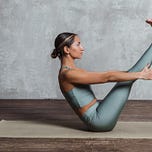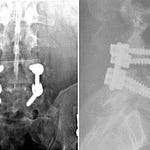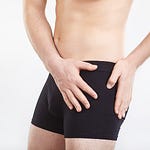FROM THE AUSTRALIAN NEWSPAPER October 8th 2025 (THE TIMES)
By Peta Bee
How strong is your core? Fail to strengthen the muscles that wrap around your midriff and spine, including the visible “six-pack” and the deeper abdominals and back muscles, and your posture, back and functional movement will suffer. For more than two decades personal trainers have encouraged us to focus on core-specific workouts to keep our bodies moving well and free from pain, and plenty of us diligently took to abs and core-strengthening classes in our droves. But is much of what we’ve been told wrong?
Ashley James, a physiotherapist and director of practice and development at the Chartered Society of Physiotherapy, says core training became fashionable in the early 2000s but since then many of the early principles have been proven to be flawed.
“We now know that a lot of the assumptions we had about the core and trunk muscles are not true,” James says.
Many experts believe the benefits of core training have been overplayed by the fitness industry. “In reality just being fit and healthy will be the best thing you can do to prevent back pain,” says Dr Hunter Bennett, a senior lecturer in exercise science at the University of South Australia who has studied core-related issues. “You don’t need to be focusing on a single muscle group [such as the core].”
Here are the core truths.
Weak abs don’t lead to back problems
It’s the mantra of many personal trainers that undertrained core muscles will lead to a lack of stability in the spine and, ultimately, to low (or lower) back pain. But James says this is rarely the case. “The evidence for a link between the two is weak,” he says. “People with very strong core muscles can still get back pain.”
A study published this year in the Journal of Clinical Medicine looked at 117 people with and without back pain to find out whether core strength was implicated. Participants were asked to perform the plank, one of the most popular trunk muscle stabilisation exercises prescribed to enhance neuromuscular control and spinal support. Researchers from Daemen University in New York were surprised to find that back pain sufferers were able to hold a plank for “significantly longer” than those without, suggesting they had better levels of abdominal strength.
Working your core won’t speed up back-pain recovery
There’s scant evidence that working on strengthening your core muscles specifically will improve symptoms or speed up recovery from back problems. In fact James says that people living with chronic low back pain often inadvertently brace their trunk muscles most of the time, which means they hold a lot of unnecessary tension in their core.
Do you hold your breath when getting up from a chair or bending to pick something up? Then you could be bracing your core muscles in an unhelpful way. “Ironically, doing more and more core-strengthening work can make muscles even tighter and you risk your low back pain worsening over time,” James says. “What you really need to do is relax those muscles to alleviate the pain.”
Slow stretching, gentle activity and deep breathing are the best ways to relieve tension in the trunk muscles.
Pilates is not the best route to a healthy back
Pilates enthusiasts say the core-strengthening approach helps to improve posture and prevent lower back pain. Picture: Getty Images
Devotees of Pilates claim that the low-impact stretching and core-strengthening approach is unrivalled for improving posture and preventing low back pain. However, research has shown it is no better than other forms of activity for back issues.
A comprehensive review of evidence by Daniel Belavy, an associate professor at the Institute of Physical Activity and Nutrition at Deakin University in Australia, that was published in the British Journal of Sports Medicine, found that Pilates wasn’t superior to other active forms of exercise, such as aerobic activity and resistance exercise. He also found that standard trunk exercises such as various planks, hip bridges, dead bugs and dead lifts held as many benefits as Pilates.
“When it comes to avoiding and alleviating pain, exercise will help but no single type stands out as being the best,” James says. “Walking is as good as running, running is as good as Pilates and, ultimately, the best activity for your back is one that you will stick to.”
If you enjoy Pilates – as I do – and it helps you feel better then carry on doing it but incorporate other forms of physical activity alongside it. Don’t expect miracles from Pilates alone.
Cross training is the best route to stronger core muscles
There is no workout that has been shown to be more effective for improving posture and reducing the risk of associated problems such as back and shoulder pain. Indeed the best approach is to add as wide a variety of movement as possible.
“You get a similar amount of core muscle contraction with many types of exercise,” James says. “People who are physically active tend to have lower rates of back pain and a variety of different types of physical activity gets you stronger all over, including your core.”
The important thing is that an exercise program should be progressive to be effective. “It is likely that your core muscles will get a little stronger through things like running, swimming and cycling,” Bennett says. But they will get used to this stimulus and stop adapting fairly soon so you need to up the ante. Gradually adding some resistance exercise that targets the abdominals through a full range of motion and allows you to add moderate to heavy loads “is probably your best bet to make them stronger”, Bennett says.
No single abdominal muscle is more important than others
David Beckham’s abdominal muscles have starred in recent advertising campaigns. Picture: Supplied
When it comes to core muscles the star of the show for many years was the deeply embedded transversus abdominis (TvA), a delicate sheet-like muscle that wraps around our mid-section like a corset to stabilise the spine. Along with deep trunk muscle, the multifidus that lines the spine, the TvA was long considered a focus for people with persistent low back pain. From the early 2000s it became popular practice in gym classes to isolate these hard-to-target deep abdominal muscles by engaging the pelvic floor, drawing “navel to spine” to contract the TvA. I was once told to belly laugh several times a day to activate my TvA. Now physiotherapists say we needn’t bother.
“There was a phase when even medical professionals used to test to see if the TvA was activated in people with back problems and other issues,” James says. “We used to think that the TvA muscle needed to be switched on first before the others for an exercise to be effective but that is no longer the case.”
The theory, he says, has been disproved and the consensus is that none of the core muscles is any more important than the rest.
You don’t need to engage your core before every exercise
Who hasn’t heard the phrases “tighten your core” or “engage your abs” from the lips of a gym instructor? We are led to believe that practising these prior to performing any resistance exercise will save us from injury. Is it true?
“People often use these terms to describe tensing your abdominal muscles before lifting a weight,” Bennett says. “If you are doing it while holding in a full breath of air, this might help you lift a little more weight by making you feel more stable but it isn’t necessary in most exercise contexts. And it probably won’t have any impact on your risk of injury if you don’t do it at all.”
Our bodies intuitively engage muscles needed to perform a movement such as lifting, pulling or pushing – we don’t need to actively focus on it. As Ally Taylor, a personal trainer and the founder of Amovida fitness boutique in Surrey, recently told FitPro, an educational body for the UK fitness industry: “It [the core] doesn’t work in isolation, it works in context. It acts reflexively, adaptively and in response to task demands, not because we consciously brace it every time we move.”
Will strong abs helps to prevent sports injuries?
When it comes to preventing injuries the benefits of core training for athletes are more convincing than they are for the general population. Researchers from Ghent University in Belgium found that deficiencies in core strength and endurance were potential risk factors for athletic injuries and a study this year in the International Journal of Health Sciences Research concluded that core strength “plays a crucial role in preventing lower limb injuries in athletes”.
Even so, Bennett says it’s no good having a strong core and weak glutes, hamstrings and shoulder muscles if you are sporty. “In general whole-body strength is protective of injuries,” he says. “It is likely that injury prevention is simply a by-product of athletes with strong upper and lower bodies also having stronger cores.”
The Times













